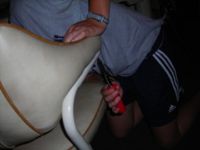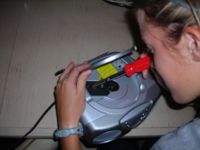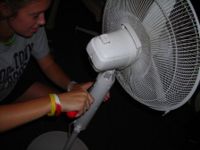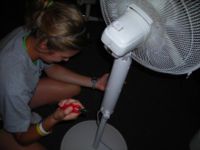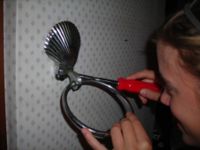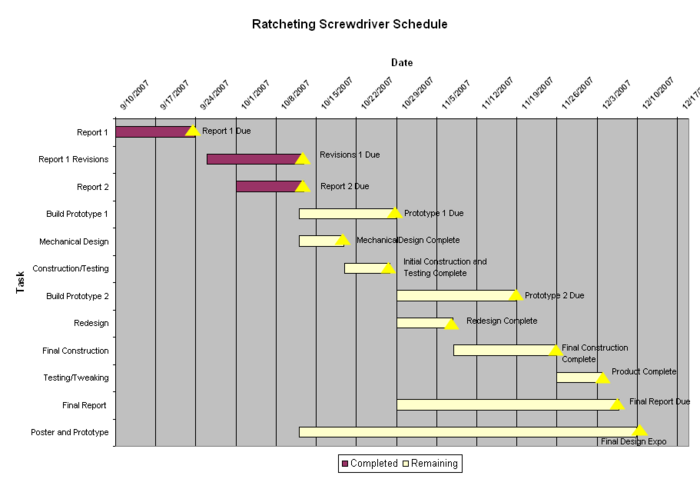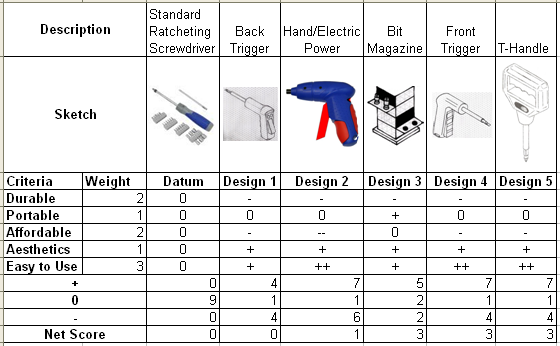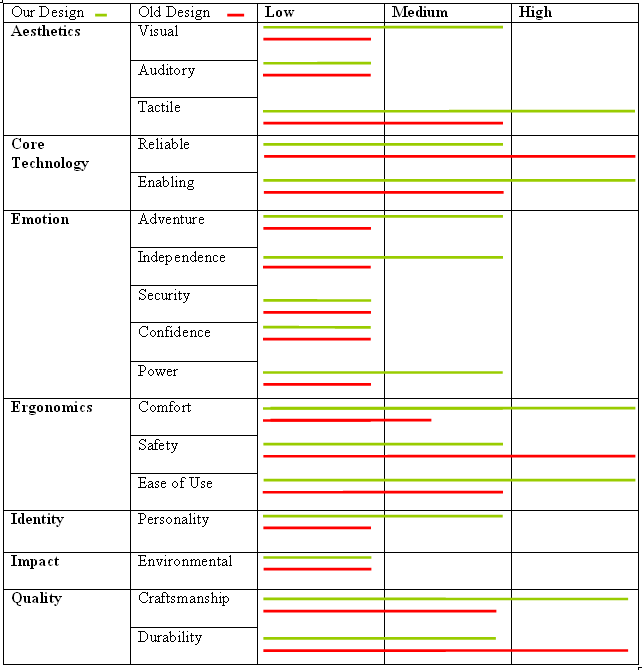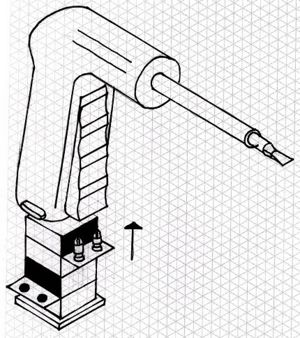Ratcheting Screwdriver Redesign
From DDL Wiki
(→Market Research) |
(→Final Design) |
||
| Line 60: | Line 60: | ||
<br /> | <br /> | ||
<br /> | <br /> | ||
| - | Our proposed choice of redesigns consists of several key features meant to improve upon the original design. | + | Market research has shown some issues with the current design of a ratcheting screwdriver. Our proposed choice of redesigns consists of several key features meant to improve upon the original design. The new design will be easier to use, the controls will be more intuitive, and more versatile than the previous design. |
| + | The first feature being redesigned is the handle. The existing design, while tried and true, has several flaws. Gripping the handle requires an unatural hand position and quickly leads to fatigue after repeated use. The new design is much more ergonomic. The pistol grip is a much more natural postion and since the device is not operated by a twisting motion the probability of fatigue is greatly reduced. The new handle design also promotes the use of downward pressure and will therefore reduce the number of stripped screw heads. | ||
| + | Included with this new handle design is a new operating mechanism. | ||
| - | |||
| - | |||
Clearly illustrated switch | Clearly illustrated switch | ||
One hand switch operation | One hand switch operation | ||
Rotating | Rotating | ||
| + | |||
Hand powered | Hand powered | ||
Trigger | Trigger | ||
Revision as of 14:13, 12 October 2007
Contents |
Market Research
We asked a number of people to use a ratcheting and non-ratcheting screwdriver on a variety of normal household items. The items tested included a CD player, a towel holder, chairs, a fan, a bedframe, a vaccum cleaner, and an airsoft gun. The idea was to provide a wide array of objects and a large sample size in order to gain a new perspective on how people use the tools and the problems they often encounter.
After carefully observing each of the users and interviewing them about their experiences afterwards, the most common problems experienced were:
- Applying ample pressure
- Screwing from an angle
- Determining which way the screwdriver is set up to ratchet
- Screwdriver being too long to access a screw
- Screwdriver being too short to access a screw
- Bit connection is unstable
- Bit connection point is too thick to access a screw
- Stripping screws
- Lighting issues
- Difficulties with nut/bolts
Project Schedule
The schedule for the remaining part of the project is layed out in the Gantt chart below. The milestones' occurences are denoted by a yellow triangle and have a breif description next to them. The big milestones will be the completion of Prototype 1 and Prototype 2, the Final Report, and the Design Expo. The chart is in one week increments with the red parts of the bar denoting the parts of teach task that have been completed and the cream-colored yellow represents the time remaining to complete the task. All tasks will initially be completed as a group, and will be divided up as seen fit when we are doing tasks.
Gantt Chart
Design Analysis
Pugh Chart
Value Opportunity Analysis
Aesthetics
Core Technology
Emotion
Ergonomics
Identity
Impact
Quality
Final Design
Market research has shown some issues with the current design of a ratcheting screwdriver. Our proposed choice of redesigns consists of several key features meant to improve upon the original design. The new design will be easier to use, the controls will be more intuitive, and more versatile than the previous design.
The first feature being redesigned is the handle. The existing design, while tried and true, has several flaws. Gripping the handle requires an unatural hand position and quickly leads to fatigue after repeated use. The new design is much more ergonomic. The pistol grip is a much more natural postion and since the device is not operated by a twisting motion the probability of fatigue is greatly reduced. The new handle design also promotes the use of downward pressure and will therefore reduce the number of stripped screw heads.
Included with this new handle design is a new operating mechanism.
Clearly illustrated switch One hand switch operation Rotating
Hand powered Trigger
loose screw
storage for bits

